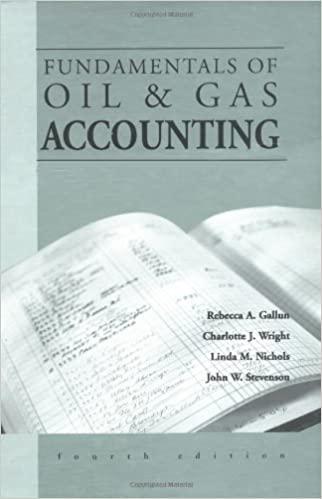The images have been updated, if you are having trouble seeing the images please zoom in. Thank you. 

Calculating 401(k) Matching Contributions Companies decide whether to institute matching contributions. Ones that offer matching contributions do so for numerous reasons, including recruitment and retention of the most qualified individuals. Also, companies choose the formulas for making contributions and setting maximum limits. Here are three common approaches for determining matching contributions Full match: The employer fully matches an employee's contribution to the 401(k) plan account up to an amount set by law. For illustrative purposes, an employee earning $50,000 annually contributes $2,000 to her 401(k). Then, the company's matching contribution equals $2,000. Fixed dollar match: The employer deposits $1 for every $1 the employee contributes up to a specified limit, for instance, 5 percent of pay. One employee contributes 3 percent of her $100,000 pay equaling $3,000: (3 percent $100,000). The employer contributes the same amount Another employee contributes 10 percent of his $100.000 pay equaling $10,000: (10 percent x $100,000). In this case, the company deposits $5,000 (5 percent $100,000) because the plan specifies a 5 percent matching contribution maximum. Variable dollar match: The employer's contribution decreases as an employee's contribution increases. For example an employer might deposit $1 for every 51 on the first 3 percent of pay contributed by the employee, and 50 cents per dollar on the next 3 percent of pay. An employee who earns $100,000 annually contributes 6 percent to the 401(k) plan, equaling $6000 (6 percent $100,000). The employer contributes a total of $4,500: [(51 x (3 percent x $100,000)) + (50.50 (3 percent x $100,000))]. Now, let's calculate the employer's matching contributions for three employees, Amanda, Shiyu and Onkar using each method, Amanda earns $32,900 annually and does not contribute anything to the 401(k) plan. Shiyu earns $120,000 annually and contributes 9 percent of pay to the 401(k) plan. Onkar earns $74,400 annually and contributes 2 percent of pay Under the full match approach, the employer's contribution for (Round your answers to the nearest hundredths place.) a) Amanda: SO b) Shiyu: $ 10,800.00 c) Onkar: $ 1488 Under the fixed dollar match approach (Fixed dollar match: 75 cents per each $1 employee contribution)the employer's contribution for (Round your answers to the nearest hundredths place.) a) Amanda: $0 b) Shiyu: $ 8,100.00 c) Onkar. $ 1,116.00 The Total Dollar Contribution to each employee's 401(k) account as follows: (Round your answers to the nearest hundredths place) d) Amanda: $0 e) Shiyu: $ 18,900.00 f) Onkar: $ 2,604.00 Under the Variable dollar match approach (Variable dollar match: 51 per each $1 employee contribution on the first 2 percent of pay and 75 cents per 51 employee contribution for the next 3 percent of pay), the employer's contribution for (Round your answers to the nearest hundredths place.) a) Amanda: $0 b) Shiyu: $ c) Onkar: $ The Total Dollar Contribution to each employee's 401(k) account as follows: (Round your answers to the nearest hundredths place.) d) Amanda: 5 e) Shiyu: $ f) Onkar. [ Calculating 401(k) Matching Contributions Companies decide whether to institute matching contributions. Ones that offer matching contributions do so for numerous reasons, including recruitment and retention of the most qualified individuals. Also, companies choose the formulas for making contributions and setting maximum limits. Here are three common approaches for determining matching contributions Full match: The employer fully matches an employee's contribution to the 401(k) plan account up to an amount set by law. For illustrative purposes, an employee earning $50,000 annually contributes $2,000 to her 401(k). Then, the company's matching contribution equals $2,000. Fixed dollar match: The employer deposits $1 for every $1 the employee contributes up to a specified limit, for instance, 5 percent of pay. One employee contributes 3 percent of her $100,000 pay equaling $3,000: (3 percent $100,000). The employer contributes the same amount Another employee contributes 10 percent of his $100.000 pay equaling $10,000: (10 percent x $100,000). In this case, the company deposits $5,000 (5 percent $100,000) because the plan specifies a 5 percent matching contribution maximum. Variable dollar match: The employer's contribution decreases as an employee's contribution increases. For example an employer might deposit $1 for every 51 on the first 3 percent of pay contributed by the employee, and 50 cents per dollar on the next 3 percent of pay. An employee who earns $100,000 annually contributes 6 percent to the 401(k) plan, equaling $6000 (6 percent $100,000). The employer contributes a total of $4,500: [(51 x (3 percent x $100,000)) + (50.50 (3 percent x $100,000))]. Now, let's calculate the employer's matching contributions for three employees, Amanda, Shiyu and Onkar using each method, Amanda earns $32,900 annually and does not contribute anything to the 401(k) plan. Shiyu earns $120,000 annually and contributes 9 percent of pay to the 401(k) plan. Onkar earns $74,400 annually and contributes 2 percent of pay Under the full match approach, the employer's contribution for (Round your answers to the nearest hundredths place.) a) Amanda: SO b) Shiyu: $ 10,800.00 c) Onkar: $ 1488 Under the fixed dollar match approach (Fixed dollar match: 75 cents per each $1 employee contribution)the employer's contribution for (Round your answers to the nearest hundredths place.) a) Amanda: $0 b) Shiyu: $ 8,100.00 c) Onkar. $ 1,116.00 The Total Dollar Contribution to each employee's 401(k) account as follows: (Round your answers to the nearest hundredths place) d) Amanda: $0 e) Shiyu: $ 18,900.00 f) Onkar: $ 2,604.00 Under the Variable dollar match approach (Variable dollar match: 51 per each $1 employee contribution on the first 2 percent of pay and 75 cents per 51 employee contribution for the next 3 percent of pay), the employer's contribution for (Round your answers to the nearest hundredths place.) a) Amanda: $0 b) Shiyu: $ c) Onkar: $ The Total Dollar Contribution to each employee's 401(k) account as follows: (Round your answers to the nearest hundredths place.) d) Amanda: 5 e) Shiyu: $ f) Onkar. [








